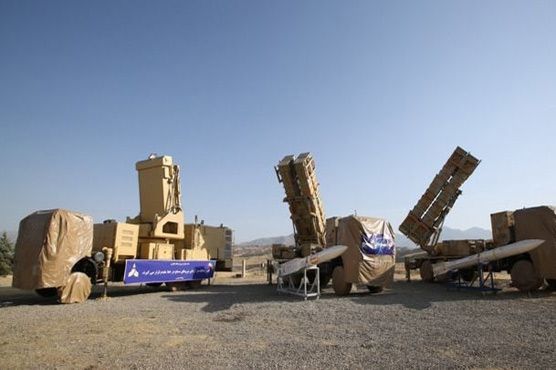US conducted cyber attack on Iran in response to drone downing: report

Tehran is yet to react to the reports, Iran's Fars news agency said Sunday.
WASHINGTON (AFP) - The United States launched cyber attacks against Iranian missile control systems and a spy network after Tehran downed an American surveillance drone, according to US media reports.
US president Donald Trump secretly authorized US Cyber Command to carry out a retaliatory attack on Iran, The Washington Post reported Saturday, shortly after the US president pledged to hit the Islamic republic with major new sanctions.
The attack crippled computers used to control rocket and missile launches, according to the Post, while Yahoo News said a spying group responsible for tracking ships in the Gulf was also targeted.
Tehran is yet to react to the reports, Iran’s Fars news agency said Sunday.
It added that it was "still not clear whether the attacks were effective or not," and suggested the US media reports were a "bluff meant to affect public opinion and regain lost reputation for the White House" following the downing of its drone.
Trump called off a planned retaliatory military strike Friday, saying the response wouldn’t be "proportionate", with Tehran warning Washington that any attack would see its interests across the Middle East go up in flames.
The downing of the US drone came after a series of attacks on tankers in the congested shipping lanes of the Gulf, that Washington has blamed on Iran, exacerbated already-tense relations between the two countries.
Iran has denied responsibility for those attacks.
Trump, who spent Saturday huddling with his advisors at Camp David, initially told reporters that he was keen to be Iran’s "best friend" -- if the country agreed to renounce nuclear weapons.
"When they agree to that, they’re going to have a wealthy country. They’re going to be so happy, and I’m going to be their best friend," he told reporters.
Iran has denied seeking a nuclear weapon, and says its program is for civilian purposes.
A multinational accord reached by Tehran and world powers in 2015 sought to curb Iran’s nuclear ambitions in exchange for sanctions relief.
But Trump left that agreement more than a year ago and has imposed a robust slate of punitive economic sanctions designed to choke off Iranian oil sales and cripple its economy -- one he now plans to expand.
"We are putting major additional Sanctions on Iran on Monday," tweeted Trump, who has also deployed additional troops to the Middle East.
"I look forward to the day that Sanctions come off Iran, and they become a productive and prosperous nation again - The sooner the better!"
Secretary of State Mike Pompeo added: "When the Iranian regime decides to forgo violence and meet our diplomacy with diplomacy, it knows how to reach us. Until then, our diplomatic isolation and economic pressure campaign against the regime will intensify."
But lest anyone think he was entirely ruling out military action, Trump tweeted Saturday evening that "I never called the strike against Iran ‘BACK,’ as people are incorrectly reporting, I just stopped it from going forward at this time!"
‘Powder keg’
A top Iranian military official warned Washington against any strikes.
"Firing one bullet towards Iran will set fire to the interests of America and its allies" in the region, armed forces general staff spokesman Brigadier General Abolfazl Shekarchi told the Tasnim news agency.
"If the enemy -- especially America and its allies in the region -- make the military mistake of shooting the powder keg on which America’s interests lie, the region will be set on fire," Shekarchi warned.
Following his comments, Iran said it had executed a contractor for the defense ministry’s aerospace organization who had been convicted of spying for the United States.
After the downing Thursday of the Global Hawk surveillance aircraft, Trump said the United States had been "cocked & loaded" to strike Iran.
Tehran insists that the drone violated its airspace -- something Washington denies -- but a commander of the elite Revolutionary Guards, Brigadier General Amir Ali Hajizadeh, told state news agency IRNA that the violation could have been an accident.
"Nonetheless, this was an act of trampling international aviation laws by a spy aircraft," Hajizadeh added.
The Pentagon released a map of the drone’s flight path, indicating it avoided Iranian waters, but Iranian Foreign Minister Mohammad Javad Zarif on Saturday published maps showing the aircraft inside Iranian territory.
"There can be no doubt about where the vessel was when it was brought down," he wrote on Twitter.
The US Federal Aviation Administration has barred American civilian aircraft from the area "until further notice," and several major non-US airlines were altering flight paths to avoid the sensitive Strait of Hormuz.


